Franchising, retail, business
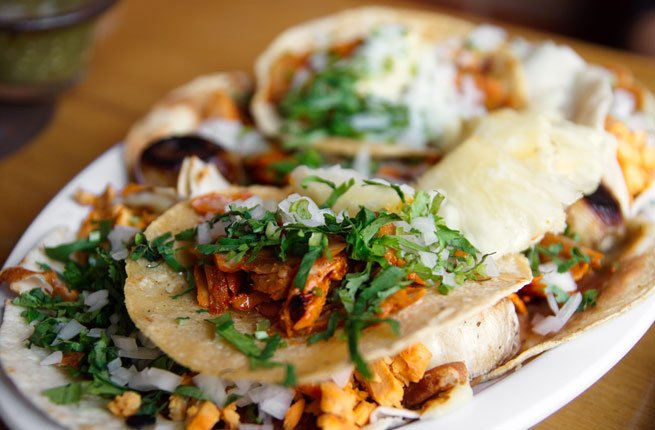
15/01/2015
Can you imagine visiting Paris without having a crêpe? Strolling through Hong Kong and not eating an egg waffle? Passing up authentic jerk chicken in Jamaica? Trying street food is an integral of traveling to new places, and it’s a delicious window into new cultures, a taste of human history.
In many countries around the world, if you’re skipping what’s being served on the street, then you’re missing out on more than just a quick, cheap lunch. We’ve scoured the globe for 20 iconic street-food dishes, from bánh mì to tacos al pastor, to add to your travel bucket list. Some will be familiar, some completely foreign, but all are worth a taste.
BÁNH MÌ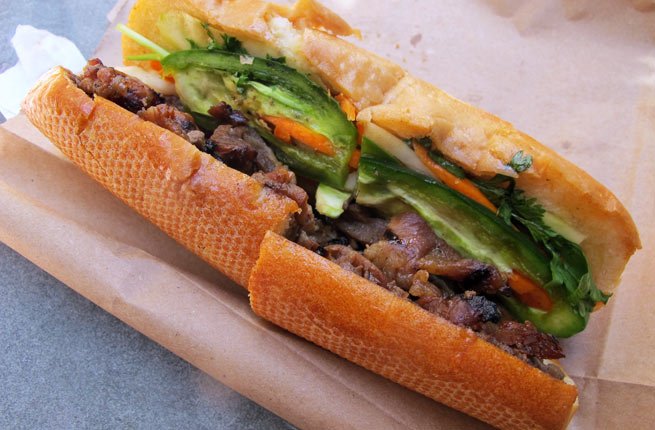
Where to Eat It: Ho Chi Minh City
Bánh mì is a term for all types of bread in Vietnamese, but it’s become synonymous with a mouthwatering sandwich that might best be described as a Vietnamese hoagie. A product of French colonialism in Southeast Asia, the bánh mì seamlessly combines Western and Eastern ingredients.
Fillings vary, but a standard bánh mì consists of a baguette stuffed with meat (perhaps grilled pork, meatballs, or cold cuts), cucumber slices, sprigs of cilantro, pickled carrots and daikon, liver pâté, and a swipe of mayonnaise. They’re increasingly popular and easy to find in the West (in somewhat less-authentic forms), but the best place to eat one is still on the streets of Saigon.
DÜRÜM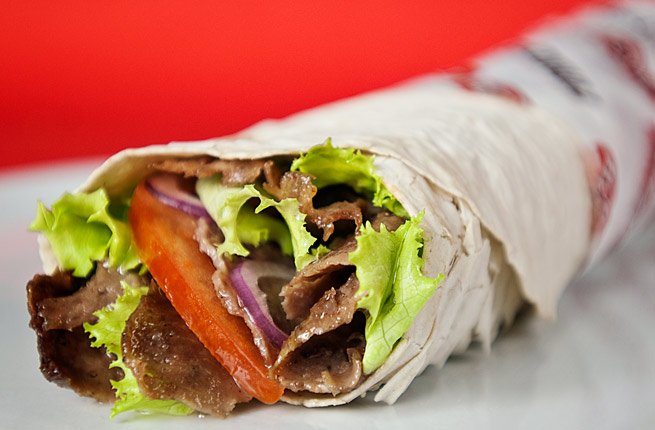
Where to Eat It: Istanbul
Translated as “roll”, dürüm is a wrap made with flatbreads like Armenian lavash or Turkishyufka. Inside the wrap, you’ll find typical typical döner kebab ingredients: spiced meat—usually lamb, though chicken or a beef-veal combination are sometimes options—cooked on a vertical spit then sliced off and topped with tomatoes, onions, cucumbers, and lettuce, along with herb-laden yogurt and hot sauce.
If you’ve ever spent a late night out in a European city, you’ve likely had one of these to soak up some alcohol—döner (also known as shawarma) is arguably Germany’s most popular street food—but the Turkish version, in which the rolled wrap is grilled to maximize crispiness, is as good as it gets.
SUPPLÌ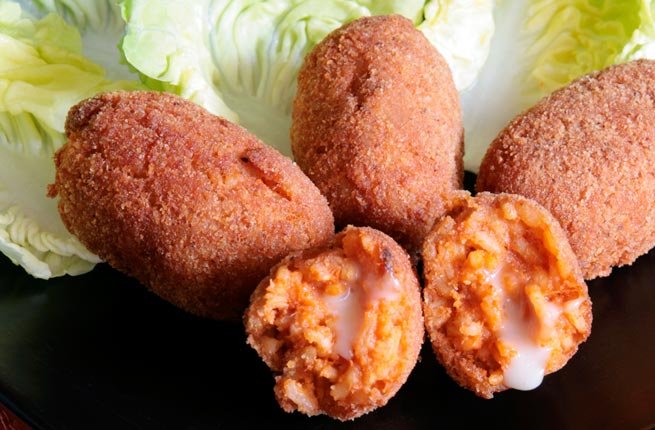
Where to Eat It: Rome
A smaller version of Sicilian arancini, these fried rice balls are named for the word “surprise” (albeit the French pronunciation), a reference to the oozing bit of mozzarella found inside. Though the recipe once included chicken gizzards, the ingredients have more or less stayed the same for the past century: rice, ragù made with ground beef and tomatoes, and mozzarella. Supplì were once sold by street vendors, but these days you can find the addictive croquettes at any Roman pizza spot or grocery store.
The traditional recipe is still ubiquitous, but in recent years Romans have taken a liking to innovative versions that feature a wide—and, appropriately, surprising—range of ingredients.
ROU JIA MO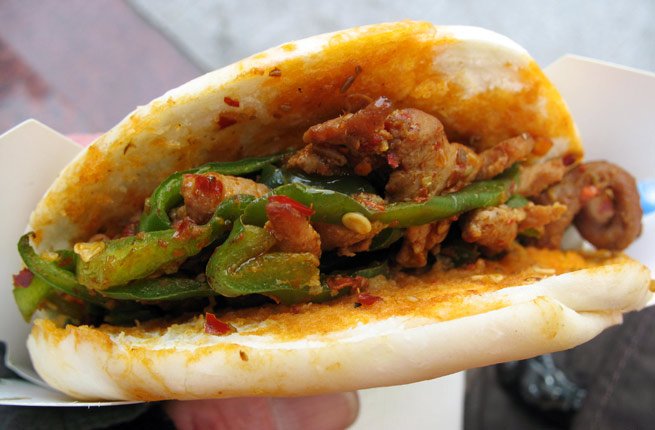
Where to Eat It: Xi’an
Essentially a Chinese version of döner kebab,rou jia mo is one of the world’s oldest sandwiches, dating back at least 2000 years. The traditional version combines pork that has been stewed in a heavily spiced (think lots of cumin) soup for several hours, which is then minced and stuffed in a flatbread with cilantro and mild peppers (beef is a common substitute in Muslim areas, and lamb is also popular in some regions).
Rou jia mo originated in Shaanxi Province, whose capital is Xi’an (home to the famous Terracotta Army), but is now widely consumed in other parts of China. It’s easiest to find in the northern part of the country, so look for it in Beijing if Xi’an isn’t on your itinerary. And should you ever find yourself in Beijing, be sure to try jian bing, habit-forming crepes stuffed with eggs, cilantro, and crispy wonton crackers, made at street carts around the city.
PORK SATAY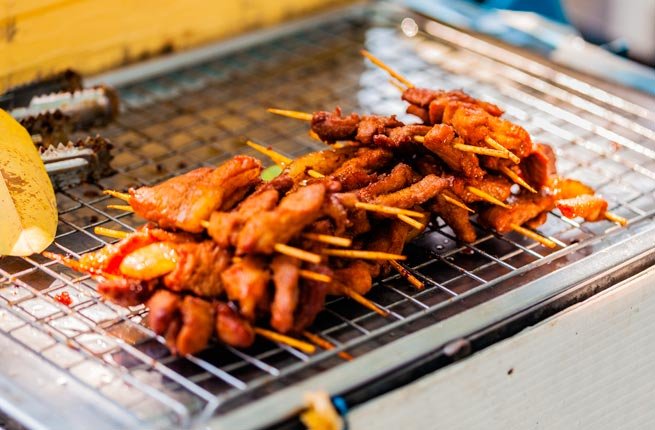
Where to Eat It: Bangkok
You’ll find satay throughout Southeast Asia, where beef and chicken are sometimes used, but pork is most popular in Thailand. Thin slices of meat are marinated in coconut milk, turmeric, and other spices before being skewered and grilled over charcoal.That’s just one part of the dish, though, as satay is also traditionally served with tangy achat (a pickled cucumber salad) and sweet-and-spicy peanut sauce. Satay originated in Indonesia, but its popularity in Thailand—you’ll see it being made on outdoor grills everywhere—is such that the rest of the world thinks it’s a Thai dish.
TACOS AL PASTOR
Where to Eat It: Mexico City
Like many great street foods around the world, tacos al pastor is the result of one culture colliding with another. In this case, Lebanese people who emigrated to Mexico brought with them the tradition of spit-roasting meats, typically lamb.
In local adoption, the meat was replaced by pork, which is marinated in dried chiles, spices, and pineapple before being cooked. Sliced off the spit like shawarma, the tender meat is then served on small tortillas with onions, cilantro, and, in some cases, a tiny bit of pineapple; lime juice and hot salsa are popular toppings.
TAGINE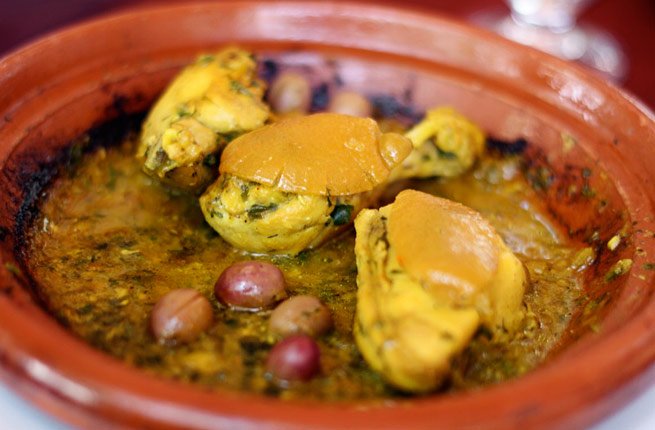
Where to Eat It: Marrakesh
Named for the earthenware pot in which it is cooked, tajine is a Berber stew from North Africa that is slowly cooked for hours over hot coals. Beyond that, there can be a lot of variation between one tajine and another, but the basic components are meat (lamb, chicken, or beef), vegetables, and lots of herbs and spices; fruit and nuts are also common ingredients.
Typically served with couscous or bread, these irresistible stews are served everywhere in Morocco, from street stalls to the finest restaurants—but a humble dish like this is best eaten in non-gussied-up form in a simple setting.
CHORIPÁN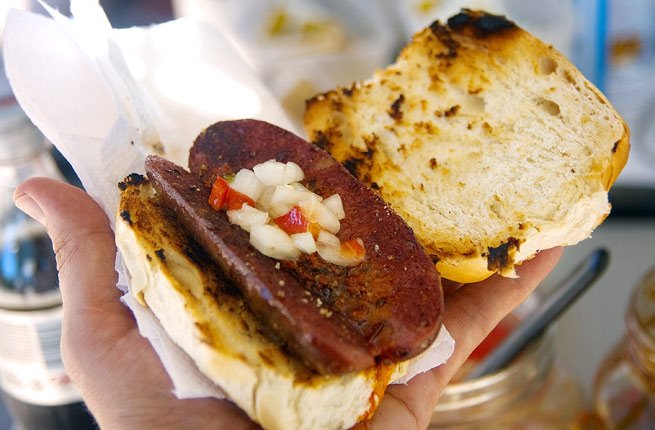
Where to Eat It: Buenos Aires
Sausage sandwiches are a staple of South American street food, popular in Brazil, Chile, Argentina, Uruguay, Peru, Bolivia, and Venezuela. The Argentine choripán is a model of simplicity: a grilled beef-and-pork sausage, split down the middle and placed on crusty bread, then topped with garlicky chimichurrisauce.
It’s a popular food item at sports venues, and it’s also commonly served as an appetizer during the preparation of an asado, but you can find them at street stalls any day of the week.
BHEL PURI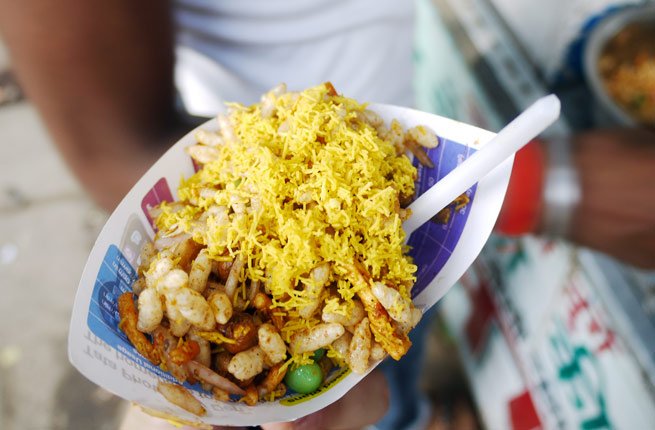
Where to Eat It: Mumbai
India’s street snacks, collectively known aschaat, vary greatly from region to region, butbhel puri can be found in most parts of the country. Still, Mumbai is the best place to find the real deal: a combination of puffed rice, fried vermicelli-like noodles called sev, vegetables, spices, and chutneys.
The result is an exciting balance of textures and sweet, salty, tangy, and spicy flavors. The dish is often associated with Mumbai’s beaches, but it can found at street stalls throughout the city.
AREPAS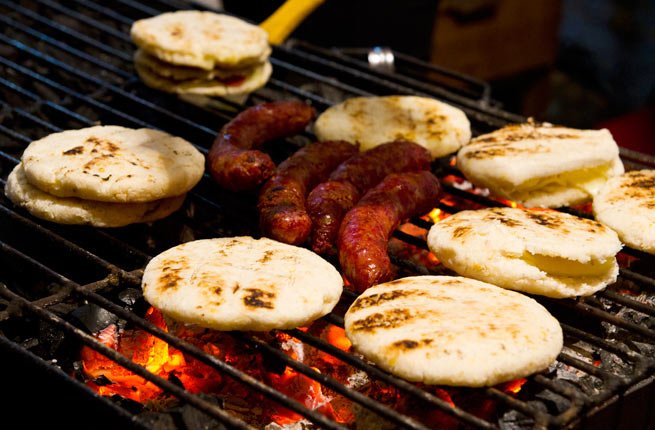
Where to Eat It: Bogotá
Typically eaten for breakfast or as an afternoon snack, arepas are filling flatbreads made from maize or flour that can be grilled, baked, or fried to pillowy perfection.
Though arepas are often used to make sandwiches in Venezuela, that’s not the case in Colombia, where they’re commonly topped with butter, cheese, eggs, condensed milk, chorizo, or an onion-based sauce called hogao. If you want to feel like a true Bogotá local, go for the traditional breakfast of a plain arepa with a cup of hot chocolate.
Fonte:http://uk.businessinsider.com/iconic-street-food-dishes-2015-1?nr_email_referer=1&utm_source=Triggermail&utm_medium=email&utm_term=Business%20Insider%20Select&utm_campaign=BI%20Select%20%28Tuesday%20Thursday%29%202015-01-15&utm_content=emailshare?r=US